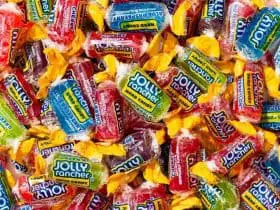When the wind feels like stinging needles and the temperature drops below freezing, there’s no getting away from a fluffy and cozy fur coat. Lately, the said fabric left the exclusive closets of fashion models and rich businesswomen and labeled itself as the ultimate option for anyone who wants to stay warm and stylish at the same time.
Being an undying fashion trend and with the growing social consciousness against animal abuse, faux fur replaced lots of real fur items on the shelves of large fashion brands. So what’s that fabric, and what’s the story behind it? That’s what we’re going to tell you.
So bundle up with anything for now until you finish reading this article and know everything about this cruelty-free fabric that’s going to invade your winter closet this year.
What is Faux Fur?
Coming from the french word “faux,” which means fake or false, faux fur is like what its name implies; an imitation of animals’ fur that doesn’t include animal exploitation or murder.
The material comes in a multitude of trendy colors and textures to the point that it has a broader range of uses than the real deal, which exists in a couple of colors and doesn’t always accept dyes.
On the contrary, faux fur allows for more dramatic color combinations to appeal to a wider range of consumers. Moreover, it’s more resistant to water, moth, and dust. Yet, the best quality of all is that it doesn’t always require mild dry cleaning. Actually, some pieces can even be hand washed.
Like natural fur, which has distinct types, the faux alternative comes in different styles and qualities. Some of its types include fake mink, sable, lynx, marten, and chinchilla.
Note that since it’s human-made, each faux fur type has varying naps and piles. That affects the length and softness of the fur together with the leaning direction of the pile.
In terms of appearance, it looks exactly the same as the natural fabric. However, depending on its quality and the precision by which it’s made, its feel differs.
Some of the most expensive and top-class pieces are hard to distinguish as fakes! They’re crafted even better than the real deal and feel as warm, soft, and insulating as natural fur. On top of that, their pile may vary in length to be a genuine imitation of how real fur looks like.
On the other hand, some cheap alternatives may feel scratchy and harsh on the skin. They’re made from low-quality synthetics, so they may not retain dyes for a long time and lose their luster after a couple of uses.
Regarding the price, most faux fur is cheaper than real fur. Nevertheless, you may find some top-of-the-line alternatives pricier than the natural fabric. That’s because it’s made to be more durable and heat preserving, which means tons of time and cash have been spent in its production and treatment.
What Is It Made From?
Faux fur is made from synthetic plastic fibers that may not be environment-friendly since they’re not biodegradable but definitely cruelty-free. Typically, it’s composed of two layers. The upper layer is made from acrylics, modacrylics, or a blend of both polymers, while the inner layer integrates secondary monomers that improve the material’s ability to absorb dyes.
The reason behind the use of these materials is that they are lightweight and springy, making the fake fur look more genuine. They accept dyes easily and have fire retardancy to a limit.
Furthermore, they’re water repellent or absorb water slowly and dry fast, making them a good candidate for laundering. Lastly, they’re less liable to deterioration than animal fur and don’t attract insects like moths.
Keep in mind that some manufacturers use natural fabrics like cotton, rayon, wool, and silk in the backings to make it more natural-like and improve their feel. In the case of cotton or rayon, there is no problem since they are plant-based materials.
However, if the faux fur item you’re holding integrates wool or silk, that means it’s not vegan as wool is derived from sheep, and silk is made by boiling the silkworm’s cocoons alive. The manufacture of both materials includes animal exploitation and the killing of innocent creatures.
History, Uses, and Role in Fashion
The story of faux fur began before the 1930s when real fur was expensive and as rare as hen’s teeth, making it a luxurious fabric limited to royalties and the upper class. However, it was a much-wanted material by people living in severe climatic zones such as Alaska, northern Canada, and Russia.
Funny enough, the first attempt to make faux fur was as a cheaply-produced imitation to be sold as real fur by greedy manufacturers. There were no good intentions behind the idea and definitely no animal saving criteria either.
The fake garments were made from synthetic materials along with alpaca hair. Thus, they weren’t completely animal-free. Quality-wise, they couldn’t compare to the softness and fanciness of real fur. Yet, they were much more affordable and did what’s required from fur coats, which is to keep people warm!
Hence, the idea was adopted, and after several attempts in the 40s and 50s, acrylic polymers were introduced to the market, and the fabric became an instant success.
With the boom of social consciousness and the increase of animal rights movements, the fabric skyrocketed in popularity. Vegan activists started promoting faux fur as a cruelty-free alternative.
But, what made it take place in the collections of famous fashion designers was its endless versatility and ability to absorb many colors and shades, which increased the designers’ scope of imagination.
It has quickly become a trend, and the demand for it grew crazily to the point that some manufacturers now make real fur look more artificial to appeal to such a vast mass of customers.
Now, you can find faux fur in coats, jackets, scarves, and hats. That’s besides its wide use in stuffed animals and home decorations like carpets, rugs, pillows, and beddings.
How to Store and Take Care of Faux Fur?
One of the greatest perks of faux fur over real fur is that it’s easier to maintain. Apart from being less expensive and more durable, it’s more resistant to environmental assaults. And by that, we mean it doesn’t require cold storage to prevent it from deterioration, nor does it need special protection against moths.
However, there are special precautions you should take to preserve your fur coat for ages. First, try not to wear it in the rain even if the label states that it’s waterproof. In case it catches water, let it dry naturally. Don’t blow dry it or put it in front of a heater.
Moreover, avoid washing it more times than necessary and, if possible, use dry cleaning services instead of washing it manually. While handwashing isn’t particularly harmful to faux fur, it can affect it in the long term, and we want to keep it good as new for as long as we can.
Finally, store it in a dry place and comb it regularly to keep the fur in an ideal state. Furthermore, if you catch any stain or dark spot, don’t procrastinate cleaning it as it’ll harden and ruin the hair beneath. Make sure to clean it quickly with a water spray and brush.
Real Fur vs. Faux Fur – Tell the Difference
Sometimes it’s tough to tell the difference between real fur and faux fur. While you’d expect that the standard fraud would be that a customer buys faux fur as real fur, the reverse actually happens! In many cases, costumes bought faux fur and realized it’s natural animal skin after the damage had already been done.
We don’t want the vegan community to be fooled, so before you pay your hard-earned cash, here are a few tips to help you identify faux fur and avoid its cruel twin:
- The first logical measure to take is to check the label. Even if it states that the garment is made from faux fur, inspect the listed manufacturing materials. Make sure there’s no wool, cashmere, silk, or any animal-derived material used.
- Suppose the label doesn’t state this information clearly. Hold the fabric and touch its base with your fingers. If it’s animal skin, you’ll be able to identify it immediately as it differs drastically from synthetic materials.
- If you’re still in doubt, try sticking the backing with a needle. If it feels resistant, it’s real since natural skin isn’t as elastic as artificial materials. On the other hand, if it goes through smoothly, the fur is safe.
- After you’re finished with the backing, inspect the fur hair. Real fur is smoother and doesn’t stick together or to your hands when you pass your fingers through it. Moreover, look at it carefully. If it’s uniformly coarse, then it’s the fake alternative. However, if the hair has a thick bottom and thinner top, it’s definitely real.
- If applicable, try burning a few strands of the fabric. If it smells organic or has the smell of burnt hair, it’s natural. However, if it smells like burnt plastic, it means you’re holding faux fur.
- Finally, if all these measures don’t put your mind at ease, contact the manufacturer or ask an animal rights group about the brand and the material in question.
Final Thoughts
As we’ve come to an end, we hope that by now, you know everything about faux fur, how to take care of it, and how to distinguish it from real animal fur.
With so many options on the market, the possibility of buying a not completely vegan faux fur is still strong because, as we mentioned before, manufacturers and retailers aren’t really honest about their products.
Hence, we recommend that you purchase faux fur from vegan fashion brands that are either identified by PETA (People for the Ethical Treatment of Animals) or have a good reputation that guarantees their authenticity.
Some of these brands are Apparis, Pelush, Furious Fur, Maison R&C, and Helen Moore. You can find even more options in popular fashion brands such as Gap Inc., H&M, and Zara. They haven’t gone entirely animal-free, but they don’t use animal fur anymore.
Gucci, Chanel, Micheal Kors, and Ralph Lauren also recently decided to ban using real fur in their items, so you can find some classy and cruelty-free coats there.
All in all, always buy smart, check the labels, and stay vegan for the love of all living creatures!







![Best Vegan Tennis Shoes in 2023 [Review] 27 Best Vegan Tennis Shoes](https://getvegan.com/wp-content/uploads/2020/06/Best-Vegan-Tennis-Shoes-2-280x210.jpg)
![[Company Profile] Will's Vegan Shoes: The Best Products They Offer 32 Will's Vegan Shoes](https://getvegan.com/wp-content/uploads/2021/10/wills-vegan-shoes-280x210.jpg)
![Everything You Need to Know About Vegan Shoes [Ultimate Guide] 35 vegan shoes guide](https://getvegan.com/wp-content/uploads/2021/07/vegan-shoes-280x210.jpg)
![[Company Profile] 15:21: The Best Products They Offer 38 15:21 Company Profile](https://getvegan.com/wp-content/uploads/2021/07/1521-store-1-280x210.jpg)
![[Company Profile] Matt & Nat: The Best Products They Offer 41 Matt and Nat](https://getvegan.com/wp-content/uploads/2021/04/matt-nat-280x210.jpeg)
Leave a Reply